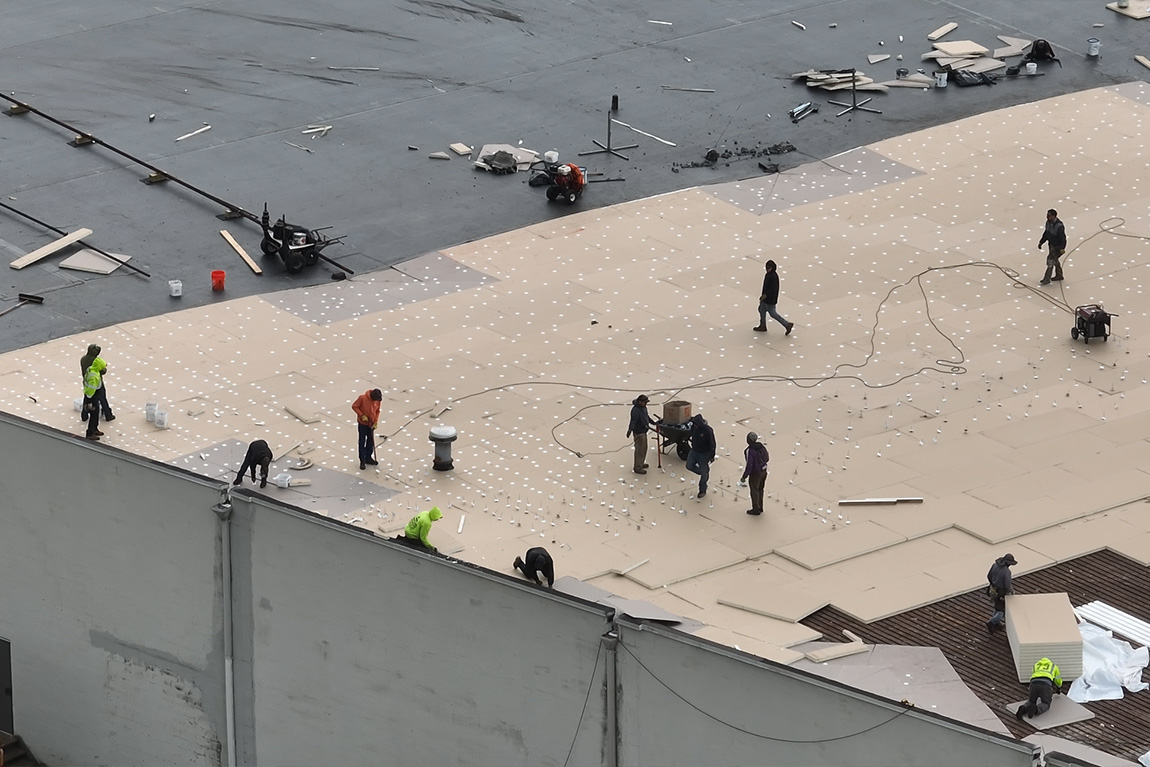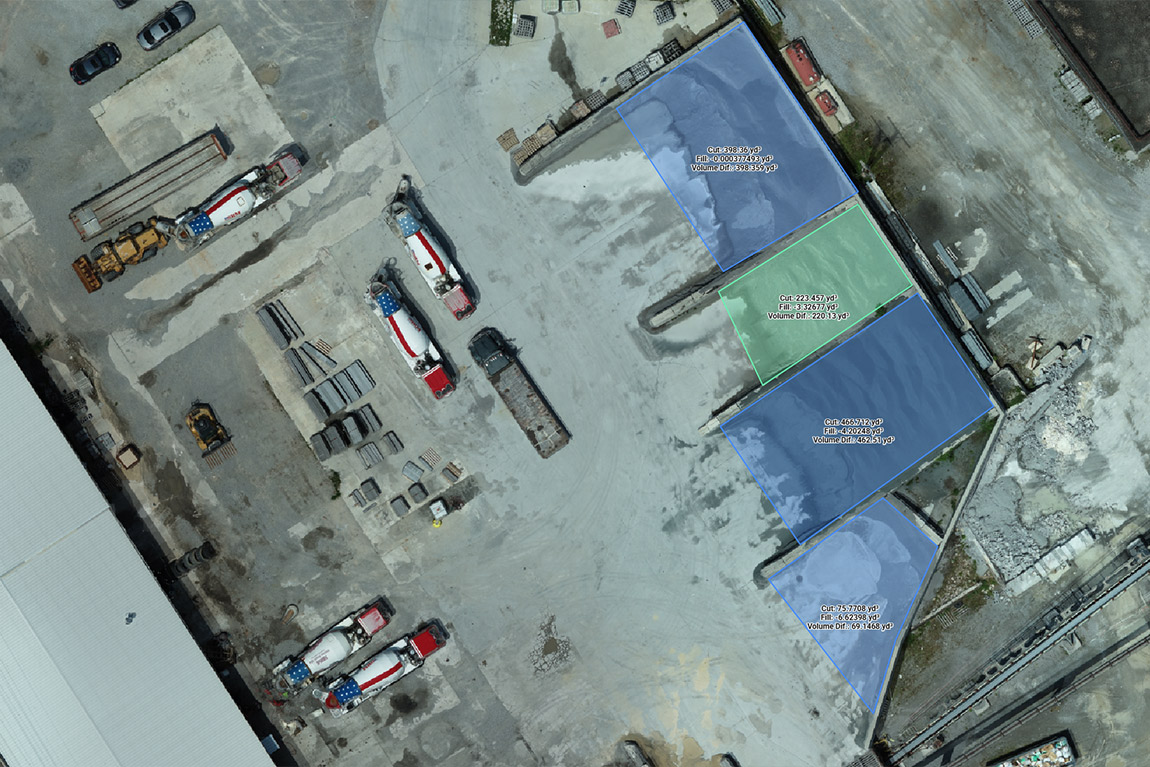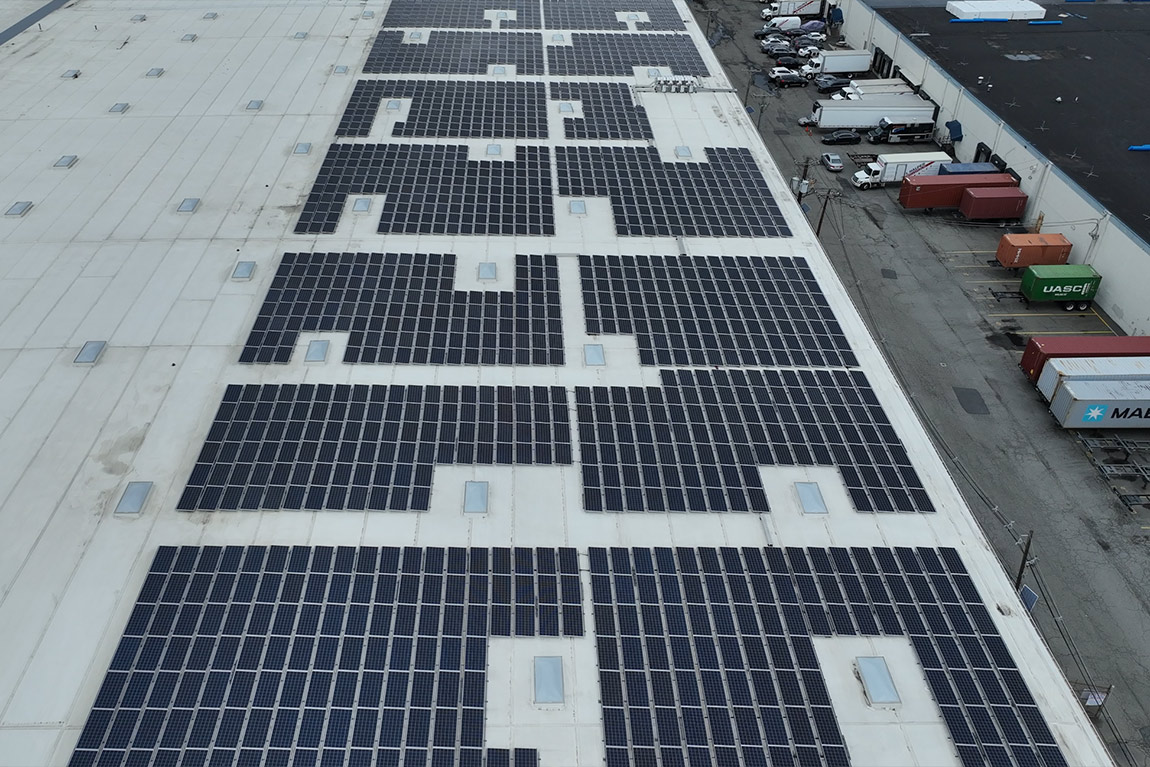Above and Beyond: Transforming Roof & Property Inspections with Drone Accuracy and Safety
I. Introduction: The High Stakes of Property Integrity
A property’s roof and exterior envelope are its first line of defense against the elements. Maintaining their integrity is crucial for protecting the building’s structure, ensuring occupant safety, preserving property value, and managing energy efficiency. However, traditional methods for inspecting roofs and building facades often fall short. Climbing ladders and walking on roofs poses significant safety risks for inspectors, contributing to a high rate of falls in the construction and inspection industries.52 Manual inspections can also be time-consuming, especially for large or complex properties, and may fail to identify subtle damage or access hard-to-reach areas effectively.52 Accessing tall facades or steep roofs often requires expensive and disruptive equipment like scaffolding, aerial lifts, or cranes, making frequent, thorough inspections impractical or cost-prohibitive for many property owners and managers.39 Yet, neglecting regular inspections allows minor issues like small leaks or cracks to escalate into major problems, leading to costly repairs, water damage, mold growth, and compromised structural integrity.71
Fortunately, drone technology offers a revolutionary alternative. Unmanned Aerial Vehicles (UAVs) equipped with high-resolution cameras and advanced sensors provide a modern, safe, efficient, and comprehensive solution for inspecting roofs, facades, and entire property exteriors.38 Drones can quickly capture detailed data from vantage points inaccessible to human inspectors, delivering insights that enable proactive maintenance, accurate assessments, and informed decision-making.
This technological advancement effectively democratizes high-quality inspections. What was once a costly and risky undertaking, often reserved for major commercial properties or post-incident assessments, becomes feasible and affordable for routine checks on a wider range of buildings, both residential and commercial. This allows property managers, roofing contractors, and insurance adjusters to adopt a more preventative approach to property maintenance. Furthermore, the objective, high-resolution visual data captured by drones creates an indisputable record of property condition. This documentation is invaluable for validating insurance claims after storm damage, verifying work completion for contractors, supporting warranty claims, and providing transparent condition reports for real estate transactions, ultimately reducing disputes and enhancing trust among all stakeholders.36 SimpliFly provides the expertise to deploy this technology effectively, offering a clearer, safer, and smarter way to manage property integrity.
II. The SimpliFly Advantage: A Clearer View from Above
Choosing SimpliFly for drone-based roof and property inspections delivers a suite of compelling advantages over traditional methods, grounded in safety, efficiency, accuracy, and cost-effectiveness.
- Unmatched Safety: This is arguably the most significant benefit. Drones eliminate the need for personnel to physically climb ladders, walk on potentially damaged or steep roofs, or use high-reach equipment like lifts or scaffolding.39 This drastically reduces the risk of falls and associated injuries, creating a safer working environment for inspectors and contractors. Consequently, this can lead to lower liability insurance costs for businesses utilizing drone technology.52
- Speed and Efficiency: Drone inspections are remarkably fast. An assessment that might take hours manually can often be completed in minutes with a drone, especially for large or complex properties.39 This includes flight time and data capture, significantly reducing time spent on site.39
- Cost-Effectiveness: By reducing inspection time, minimizing labor requirements, and eliminating the need for expensive access equipment (scaffolding, lifts), drones offer a highly cost-effective inspection solution.34 The return on investment is further enhanced by the early detection of issues, preventing costly future repairs.68 Case studies, like that of Geoff Neal Roofing, indicate a potentially short payback period for adopting drone technology.73
- Comprehensive Data & Accuracy: Drones capture high-resolution images and video footage covering 100% of the roof or facade surface, including intricate details and hard-to-reach areas often missed during manual inspections.34 Software can automate measurements of area, length, and pitch with high accuracy, reducing human error.52 Artificial Intelligence (AI) can assist in automatically detecting potential defects like cracks or missing shingles from the imagery.39 Specialized sensors like LiDAR provide precise geometric data 38, while thermal cameras reveal hidden issues like moisture intrusion.52
- Accessibility: Drones effortlessly access areas that are challenging or impossible for human inspectors, such as very steep roofs, tall building facades, complex roof geometries, or structurally compromised areas deemed unsafe for entry.39
- Minimal Disruption: Inspections can typically be conducted without interrupting the normal operations of the building or inconveniencing occupants.57
SimpliFly employs drones equipped with the right sensors for the job:
- High-Resolution RGB Cameras: These are essential for detailed visual assessment. They capture sharp photos and videos that allow inspectors to identify visible damage such as missing or cracked shingles, damaged flashing, clogged gutters, surface deterioration on facades, and general wear and tear.38 This imagery is also used to create accurate orthomosaic maps and 3D models of the property.
- Thermal Cameras: Thermal imagers detect subtle temperature differences on surfaces. For roofs and building envelopes, this is critical for identifying problems invisible to the naked eye.11 Trapped moisture under roofing membranes or within walls often creates cooler or warmer spots compared to dry areas due to differences in thermal capacity and evaporative cooling. Thermal scans can also pinpoint areas of missing or inadequate insulation (heat loss) and detect overheating electrical components.
- LiDAR Sensors: LiDAR provides highly accurate 3D measurements.31 For roofing, this allows for precise calculation of roof dimensions, areas, pitch angles, and the location and size of features like chimneys, vents, and skylights, which is invaluable for generating accurate repair or replacement estimates.
The true diagnostic power lies in combining data from these sensors. A visual inspection might miss moisture trapped beneath an intact roof membrane, but a thermal scan can reveal it. LiDAR can provide the precise measurements needed to quote a replacement identified through visual or thermal data. This multi-layered assessment capability offered by SimpliFly provides a far more comprehensive understanding of a property’s condition than a traditional visual-only inspection, enabling detection of both surface-level and hidden issues.
III. Transforming Inspections: Key Drone Applications
SimpliFly harnesses drone technology for a variety of critical inspection applications across residential and commercial properties:
A. Residential & Commercial Roof Inspections
- How it Works: Drones fly pre-planned, systematic routes over the roof surface, capturing hundreds or thousands of high-resolution overlapping images and/or video footage.38 Automated flight planning ensures consistent coverage and repeatable inspections.38 For flat or low-slope commercial roofs, thermal cameras are particularly effective at detecting subsurface moisture trapped within the roofing system.71 LiDAR sensors can be employed to gather precise geometric data for accurate measurement of roof dimensions, area, and pitch.38 AI algorithms can be applied to the collected imagery to automatically flag potential defects for review by a human expert.39
- Benefits: This method is significantly safer and faster than manual inspections involving ladders and roof-walking.52 It allows for the thorough identification of common roof problems, including leaks, missing, cracked, or displaced shingles/tiles, damaged flashing, granule loss, blistering, ponding water, and general wear.52 The accurate measurements derived from the data facilitate precise material take-offs and cost estimates for repairs or replacements.52 Thermal imaging enables the detection of hidden moisture before it causes extensive structural damage or mold growth.71 Drones are exceptionally useful for rapid and safe damage assessment after severe weather events like hail or windstorms.5 The adoption of drone technology for inspections is a growing trend in the roofing industry.72
- Deliverable: Comprehensive Inspection Report including annotated high-resolution photos/videos highlighting defects, thermal maps indicating potential moisture or heat loss, accurate roof measurement reports (area, pitch, lengths), 3D models for visualization, and potentially AI-generated defect summaries.
B. Building Facade & Envelope Inspections
- How it Works: Drones navigate vertically along building exteriors, capturing detailed visual imagery of facades, windows, seals, and structural components, even on high-rise buildings.30 Thermal cameras are used concurrently or in separate flights to assess the building envelope’s thermal performance, identifying areas of significant heat loss (indicating insulation gaps) or potential air and water infiltration points.11
- Benefits: This method provides a safe and cost-effective way to inspect tall or complex building exteriors without the need for expensive and disruptive scaffolding, swing stages, or aerial lifts.34 It enables the identification of various facade issues such as cracks in masonry or stucco, spalling concrete, deteriorating mortar joints, sealant failures around windows and doors, water stains indicating leaks, and thermal anomalies related to insulation or air barriers.34 This detailed information is crucial for planning preventative maintenance, diagnosing sources of energy loss, prioritizing repairs, and ensuring the long-term durability and performance of the building envelope.34
- Deliverable: High-Resolution Orthomosaic Maps of Facades, Annotated Close-up Images/Videos of Defects, Thermal Maps of the Building Envelope, Detailed Condition Assessment Reports.
C. Property Condition Assessments (Insurance & Real Estate)
- How it Works: Following incidents like storms, fires, or floods, drones can be rapidly deployed to safely document the extent of damage to roofs and property exteriors for insurance claims processing.5 Drones are also increasingly used by home inspectors to provide a thorough assessment of roof condition as part of pre-purchase inspections, offering potential buyers valuable insights.11 The technology creates a comprehensive, time-stamped visual record of the property’s condition at a specific point in time.39
- Benefits: Drone data can significantly expedite the insurance claims process by providing adjusters with quick, safe access to clear evidence of damage.77 Assessing damaged or potentially unstable structures is much safer via drone.5 The detailed photographic and potentially thermal/LiDAR documentation serves as objective proof to support insurance claims, justify repair scopes, and aid in property valuation for real estate transactions.39 Identifying potential roof issues early can inform negotiations during property sales.11
- Deliverable: Dated High-Resolution Photos/Videos, Orthomosaic Maps, 3D Models, Annotated Damage Assessment Reports, Thermal Data (if relevant for detecting moisture post-event).
IV. Actionable Insights: Interpreting Your SimpliFly Inspection Data
SimpliFly focuses on delivering inspection data that is not just comprehensive but also easy to understand and act upon.
- Deliverables Explained:
- Annotated Imagery: Reports feature high-resolution photos and video clips with clear annotations (arrows, circles, text boxes) precisely pointing out identified issues like cracked tiles, damaged flashing, water stains, or spalling concrete.37 This visual evidence makes the findings unambiguous.
- Thermal Reports: Thermal maps are presented alongside corresponding standard visual images to provide context.11 Explanations focus on identifying thermal anomalies (unexpected hot or cold spots) that warrant further investigation, rather than definitively diagnosing issues like moisture intrusion solely from the thermal image, as ground-truthing or further testing is often required.66
- Measurement Reports: Clear reports detail accurate measurements for roof area, lengths of ridges, valleys, hips, eaves, and roof pitch, derived from orthomosaics or LiDAR data.38 These precise figures are essential for contractors generating accurate material orders and quotes.
- 3D Models: Interactive 3D models allow clients to virtually rotate and zoom in on the property, examining the roof and facades from any angle, providing a better spatial understanding of the structure and identified issues.38
- Making Data Actionable: SimpliFly reports are designed to facilitate decision-making. They help prioritize repairs based on severity 66, enable roofing contractors to generate faster and more accurate estimates 52, provide objective documentation for insurance claims adjusters 74, and inform preventative maintenance schedules for property managers.71 It’s important to acknowledge the limitations – drones primarily provide visual and thermal data and cannot physically ‘feel’ for soft spots in decking or test sealant adhesion.52 However, the drone data expertly guides inspectors or contractors to specific areas requiring closer, targeted manual examination, making the overall process more efficient and effective.
The integration of Artificial Intelligence (AI) is further enhancing the actionability of drone data. While human expertise remains crucial for final verification 39, AI algorithms can rapidly scan thousands of inspection images, automatically detecting and flagging potential anomalies like cracks, rust, missing components, or specific types of damage.39 This significantly accelerates the analysis process, especially for large properties or portfolios, allowing human experts to focus their attention on validating findings and assessing more complex issues, thereby increasing overall inspection throughput and efficiency.
Looking ahead, the integration of drone inspection data directly into specialized software platforms used by roofing contractors, property managers (e.g., CMMS – Computerized Maintenance Management Systems), or insurance companies promises even greater workflow efficiencies. This eliminates manual data entry, centralizes property condition information, creates an easily accessible digital history, and facilitates smoother communication and task management related to maintenance and repairs.52
V. The Bottom Line: The Value of Drone-Powered Inspections
Investing in drone technology for roof and property inspections delivers significant value through cost savings, risk reduction, and enhanced data quality.
- ROI Focus: The return on investment is multi-faceted:
- Direct Cost Savings: Reduced labor time, elimination of expensive access equipment rentals (scaffolding, lifts), and faster inspection turnaround times lead to lower operational costs.34
- Cost Avoidance: Early detection of minor issues like small leaks or damaged flashing prevents them from escalating into major, costly repairs involving structural damage, interior water damage, or mold remediation.68
- Reduced Insurance Premiums: For contractors, demonstrating safer practices through drone use can potentially lead to lower liability insurance costs.52
- Faster Sales Cycles: For roofers, using advanced technology like drones can impress clients and potentially shorten the sales cycle.72 The Geoff Neal Roofing case study suggests a short payback period on the initial investment.73
- Value Beyond Cost: The benefits extend far beyond financial savings:
- Drastic Safety Improvement: Protecting personnel from the risks of working at height is invaluable.39
- Superior Data Quality & Documentation: Comprehensive, high-resolution visual and thermal data provides a detailed and objective record of property condition.39
- Faster Turnaround & Reporting: Quicker inspections mean faster delivery of reports and findings to clients or stakeholders.39
- Enhanced Client Communication: Detailed visual reports and 3D models improve communication and understanding between contractors, property managers, and owners.52
For roofing contractors specifically, incorporating drone inspections into their service offerings provides a significant competitive advantage. It showcases professionalism, leverages modern technology to impress potential clients 68, improves the accuracy and speed of estimates, and ultimately helps differentiate their business in a crowded marketplace.72
VI. Partnering with SimpliFly: Your Inspection Experts
SimpliFly provides professional, reliable, and efficient drone inspection services tailored to the needs of roofing contractors, property managers, insurance professionals, and building owners.
- SimpliFly’s Approach: Our team brings expertise in conducting thorough roof and property inspections.71 We utilize high-quality drones equipped with the necessary sensors – high-resolution RGB cameras, sensitive thermal imagers, and precise LiDAR systems – selected based on the specific inspection requirements.38 We employ efficient flight planning methodologies to ensure complete coverage.38 Our deliverables focus on clarity and actionability, featuring detailed annotations, side-by-side visual/thermal comparisons where applicable, and accurate measurements.52 Safety is our top priority; all operations are conducted by experienced, FAA Part 107 certified pilots adhering to strict safety protocols and all relevant regulations.12
- Why Choose SimpliFly: While DIY drone operations are possible, achieving professional-grade results consistently requires significant investment in equipment, software, pilot training (including specific inspection techniques and thermography certification), insurance, and ongoing compliance efforts.52 SimpliFly offers a streamlined, expert solution, providing access to the best technology and skilled operators without the associated overhead and management burden. We deliver reliability, accuracy, and speed, allowing you to focus on your core responsibilities.
- Call to Action: Gain a higher perspective on your property’s condition. Contact SimpliFly today to schedule a drone inspection or request a customized quote for your roof or building assessment needs. 79
VII. Conclusion: Gaining a Higher Perspective on Property Health
Drone technology has irrevocably transformed roof and property inspections, offering a solution that is vastly safer, significantly faster, remarkably accurate, and more comprehensive than traditional methods. By providing detailed visual, thermal, and geometric data from perspectives previously difficult or dangerous to obtain, drones empower stakeholders to make better decisions regarding maintenance, repairs, insurance claims, and property transactions. SimpliFly is your expert partner in leveraging this powerful technology, delivering actionable insights that protect property value, ensure safety, and optimize maintenance resources. As AI continues to enhance data analysis capabilities 34 and integration with industry platforms deepens 52, drone-based inspections will become an even more indispensable tool for proactive and intelligent property management.


